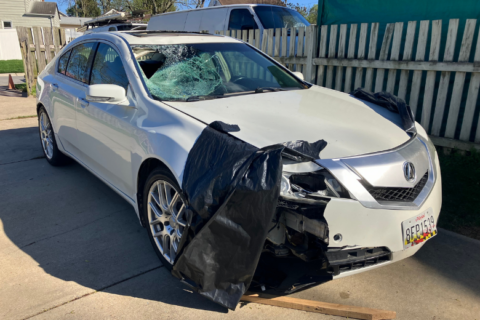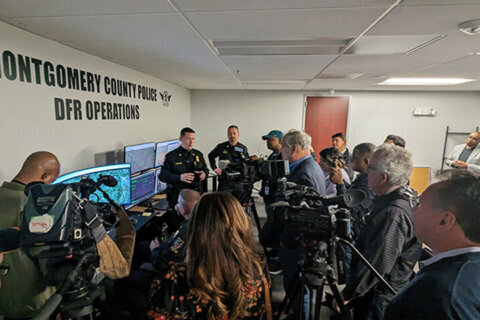Leaders in Montgomery County, Maryland, want the state to put the brakes on the review process for a controversial road-widening project.
The draft environmental impact statement with attachments is more than 18,000 pages long. It is part of the process of creating a public-private partnership, or P3, for Maryland Gov. Larry Hogan’s plan to widen parts of Interstate 270 and the Capital Beltway.
It’s a plan that would also bring toll lanes to the roads.
The public has until Oct. 8, which is 90 days from its release, to read and comment on the report.
“You’d have to read 200 pages a day for a month and half to know what it says,” said council member Tom Hucker, who chairs the county Transportation and Environment Committee.
With the coronavirus pandemic, the committee is calling for at least a 120 days to review the report. Others joined the committee’s request.
On Monday, County Executive Marc Elrich called for an extension in a letter to the state’s department of transportation.
In a joint letter earlier this month, Democratic Reps. Jamie B. Raskin and Anthony Brown and Maryland Sens. Ben Cardin and Chris Van Hollen, also Democrats, also called for the extension.
Hogan’s public-private partnership is a consortium of companies that will build, operate and maintain additional lanes on the roadway. The P3 would charge drivers to use the new lanes, but other lanes on the roadways would be free.
In his letter to the state, Elrich called the 90-day window inadequate.
“People need time to absorb information, to think about their questions and to construct a meaningful response to you, and the 90-day timeline simply doesn’t allow it,” he wrote.
During the transportation and environment committee hearing Monday, the project’s director, Lisa Choplin, with the Maryland Department of Transportation, or MDOT, said concerns about the time window have been expressed with the Federal Highway Administration.
The report is being prepared for the administration.
“They are the only ones that can make a decision regarding extending the public comment period from 90 days to 120 days,” Choplin said.
When asked about the letter from Elrich, MDOT spokesman Terry Owens also said the administration would have to grant the extension, but the state “completely understands” the concern from the county executive.
“We are coordinating with the Federal Highway Administration on the request to extend the comment period to 120 days,” Owens said.
He added, “We will be following up with the county executive very soon.”
Hucker said concerns for the project extend beyond the report. Questions remain about who would be on the hook for “gap funding” and potential rate hikes that Hucker fears residents could see in order to cover the cost for the Washington Suburban Sanitation Commission to move pipes for the project.
Owens said some sections will be profitable and some sections will need gap funding from the profitable sections.
“As we are still in the planning process, it is too early to determine the exact cost and scope of any utility relocations. We are committed to working with our utility partners, including WSSC, to ensure impacts to their facilities are minimized and improvements to I-495 and I-270 are delivered in a manner to provide the best value to Marylanders,” Owens said in an emailed statement.
Hucker and Elrich both also called for a review into the Purple Line project before the P3 process moves forward for the road-widening plan. This comes as contractors building the light rail line between New Carrollton and Bethesda announced that they were pulling out of the project over concerns on who would cover cost overruns.
The dispute between the Purple Line Transit Constructors, or PLTC, and the state continues.
“There is a lot the public deserves to know about what went wrong with the Purple Line and how they’re going to avoid those same mistakes in a much larger and costlier and more complicated project on the Beltway and I-270,” Hucker said.
Hucker also believes the state should do a post-pandemic review of the project, arguing that telecommuting will change commuting patterns.
“We’re going to be changing employers based on who allows us to telecommute, and that is going to dramatically change out commuting patterns,” Hucker said.








